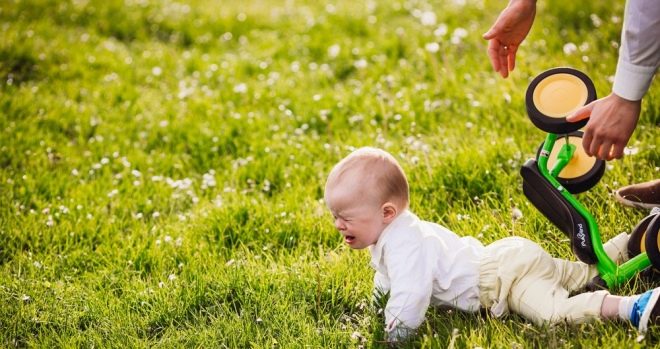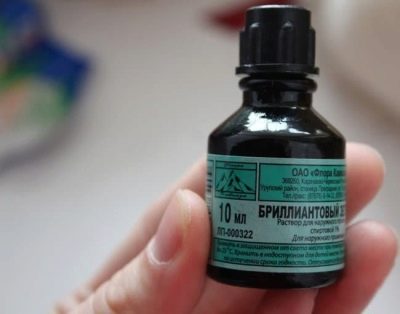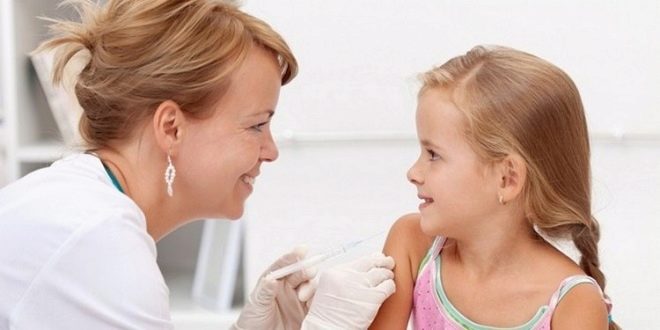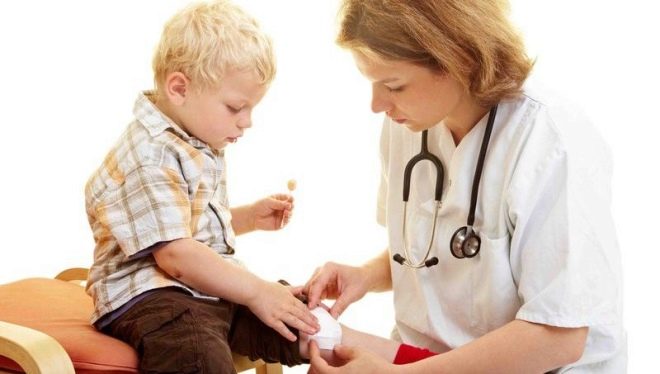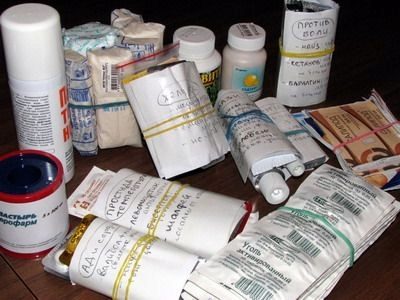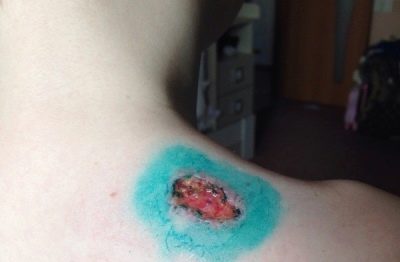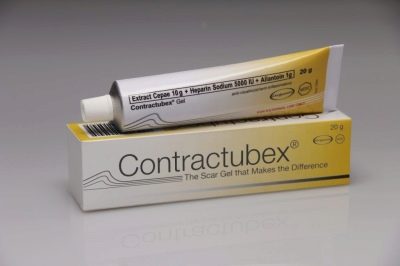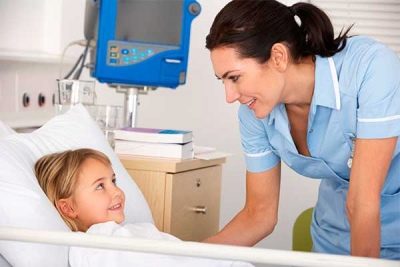How to treat a child’s wound after a fall?
Children are actively exploring this world. And in the process of this knowledge, falls are inevitable. Kids fall while running, during active games, playing sports, walking. But because every mother needs to know what and how to treat wounds and abrasions on the body of the baby after the fall. We will tell about it in this article.
What is the danger?
The main danger of wounds received by a child after a fall is possible infection. Many bacteria that live quite harmlessly on the skin of a person and in his intestines can become aggressive if they fall into an environment deprived of oxygen and quite moist and warm. It is this environment that is wound. The injury itself is not as dangerous as its infection with staphylococci, streptococci or other microbes.
When infected with a small superficial wound, inflammation and inflammation may occur. If a deep wound is infected, then the probability of developing a general infection through the bloodstream - sepsis - increases significantly.
Much depends on where and where the child fell. Considered the most dangerous fall at which the wound is heavily polluted - on the soil, on the asphalt, as well as wounds received with sharp objects at the bottom of the reservoir. Together with dirt or water, pathogenic bacteria penetrate into the child's body much more quickly through damaged skin.
Most often, as a result of falling in children, elbows, knees, face, and head are affected. The closer the wound is to the brain and important ganglions, the more dangerous it is. Thus, a wound on the face is always worse than a wound on the leg.
First aid
If a child fell from a bicycle or landed badly, leaving a swing in the yard, do not panic - all children fall without exception, and therefore, instead of being accused of inattention to the child themselves and other adults, it is important to concentrate on the other - try to figure out how serious the situation is.
First of all, you should calm the baby and inspect the wound. Assess its depth, degree of contamination, note the presence of torn edges, profusion bleeding.
When an external abrasion or shallow wound should wash the skin with cool running water, treated with hydrogen peroxide and any aniline dye that is in the house, it is best to "green paint" because it can have a detrimental effect even on staphylococcus that is difficult to destroy with something.
If the choice is stopped on the solution of brilliant green, then it is important to remember that green paint does not lubricate the open wound. Dye should be treated only the edges of the wound and the skin around it.
Instead of hydrogen peroxide, which causes a fairly strong tingling in the area of injury, you can use chlorhexidine solution. After that, a dry sterile bandage bandage is applied to the abrasion. If the wound is small, then it will be enough to apply it for an hour and a half, after which it will be removed and left to dry.
If, for some reason, the child has not been vaccinated with DTP or DTP, in which the tetanus component is present, it makes sense to go to the emergency room to carry out emergency prevention of tetanus.
If the wound is deep, then its do not touch at home, it is best to quickly deliver the child to the nearest emergency room, having previously applied a tight bandage sterile bandage to stop the bleeding.At home there is no possibility to clean the deep wound completely, whereas in the hospital conditions surgeons will quickly and efficiently clean the wound from earth, sand, and also put stitches, if necessary. Such a need is sometimes important even from a cosmetic point of view, because the scar, which will remain after the spontaneous healing of a deep wound on the face, will then give the child a lot of suffering.
Sometimes there is a need to introduce tetanus toxoid to the child in order to exclude infection with tetanus, especially if the child was injured in rural areas, the soil of which is “rich” with dormant tetanus sticks that look for them to be in a favorable environment.
If the child received a wound on the head or face, it is better not to refuse medical help. Even a small incision or abrasion on the head can only be the “tip of the iceberg.” In actual practice, the unfortunate fact of a traumatic brain injury or concussion can be found out. The wound should be washed, the hair around it (if it is on the head), cut off, rinse with an antiseptic and go to the doctor in the nearest emergency room. All injured areas of the face need to be examined by a surgeon., even small dissections sometimes need stitches or staples for more even scarring so that the baby’s face does not turn out to be damaged by scars.
In the framework of first aid, it is impossible to impose on wounds received when falling too tight dressings, so as not to disrupt the blood supply of neighboring tissues. Children are forbidden to treat wounds with alcohol or vodka. Firstly, this is pure sadism, since such treatment can cause severe burning pain, and secondly, alcohol practically does not affect such a dangerous microbe as staphylococcus, and therefore the use of such cruel first-aid methods is simply unjustified.
It is impossible for a child to put ice on a wound. If the abrasion or injury is accompanied by swelling, for example, on the knee, it is important to attach the ice so that the wound area remains open, then show the child to the traumatologist in order to exclude fractures, cracks and other injuries.
In the framework of first aid, you can use antibacterial drugs in powders - "Baneocin"Or streptocide powder. But from the application of ointment with antibiotics is better to refuse, in any case, before the occurrence of complications, inflammation or examination by a doctor.
Home Medicine Kit
In order not to run to the pharmacy after the sudden fall of the child, it is worthwhile to take care in advance that the home medicine cabinet contains all the necessary means for first aid and subsequent treatment. For emergency care you will need:
After the bandage is removed, and if a small wound occurs within an hour and a half, it will be important to closely monitor the healing process. If there are signs of inflammation, inflammation, with a weeping, non-healing wound, treatment will be needed.
To do this, you need to have at least two of the following drugs in the first aid kit:
-
ointment "Solcoseryl»;
-
spray "Panthenol»;
-
antibacterial water-repellent ointment "Levomekol»;
-
"Eplan";
-
Erythromycin ointment;
-
Balsam "Rescuer";
-
ointment "Levocin";
-
«Baneocin"- powder and ointment;
-
gelContractubex».
Treatment
A wound after a fall that does not heal for a long time should definitely be shown to a doctor. The treatment consists in treating the wound with an antiseptic (hydrogen peroxide, “Chlorhexidine”), followed by applying antibiotic ointments (“Levomekol"Or Erythromycin ointment), sterile bandaging. Dressing the child do 1-2 times a day. In difficult cases, if there is a chance of infection, the doctor may prescribe antibiotics by mouth in the form of a suspension or in capsules (depending on the type of pathogen and the age of the baby).
In the course of treatment, it is useful for a child to give vitamin complexes in which there is a sufficiently high content of vitamins B6 and B 12, as well as vitamin C (ascorbic acid), vitamins A and E, which are involved in the metabolic processes of the skin.
At the final stage of treatment, when the wound has already healed, you can use tools that promote the resorption and smoothing of scar tissue to reduce the scar. These ointments include "Kontaktubeks". This is very important in treating the effects of wounds on the face, on the lip, on any exposed part of the body, in order to minimize the negative consequences from a cosmetic point of view.
A purulent wound must be examined by a doctor even if it occupies a very small area, for example, in a baby on a finger after falling on a sharp object or after being injected with scissors. The treatment in this case will be similar, but the doctor will assess the condition of the wound and consider the possibility of its surgical cleaning.
Not all wounds can be treated at home. Deep, complicated and festering injuries may require systemic use of antibiotics and careful monitoring of the condition of the child in the hospital.
Useful tips
-
The treatment of the wound after a fall with an antiseptic should be carried out exactly as washing. Lubrication with cotton swabs is prohibited, as well as cotton wool in general, because the fibers can remain in the wound. If there is a need to use a tampon, it is better to make it from gauze.
-
Do not lubricate the moist wound after falling iodine. This drug causes an extra burn of already injured tissues.
-
For the treatment of wounds received as a result of a fall, such a remedy favorite for moms as a children's cream is not suitable. It creates a dense airtight film on the surface of the abrasion or wound and interferes with normal healing. The best cure for abrasions - the flow of fresh air and sterility.
-
The first time after healing, it is important to remember that the skin that formed at the site of the injury is thinner and more vulnerable than the neighboring areas of the epidermis that were not injured. Therefore, repeated fall and trauma of this new skin should be avoided in every way, since it will be deeper and more serious than it was the first time.
-
To prevent abrasions and wounds, you should carefully monitor the child during a walk, when buying a bicycle or roller skates as a gift, the child must always ensure that the child also has protective devices that, if not save them from all injuries, then at least minimize the effects of the fall.
To learn how to properly treat a wound for a child, see the following video.

